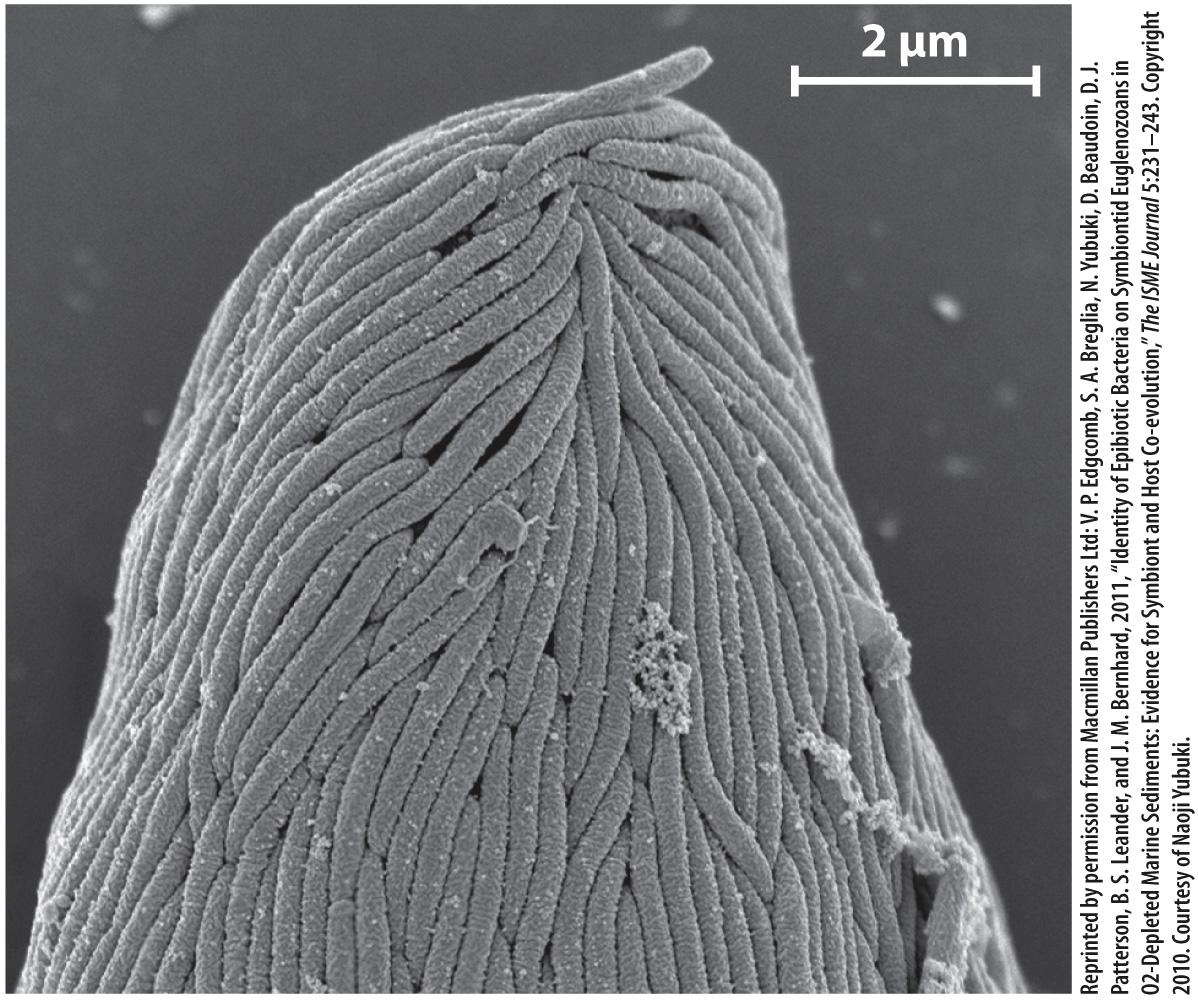In the oceans, many single-celled eukaryotes harbor symbiotic bacteria.
The evolution of the eukaryotic cell is marked by intimate associations between formerly free-living organisms. An unexpected symbiosis was recently discovered in the Santa Barbara Basin, a local depression in the seafloor off the coast of southern California. Sediments accumulating in this basin contain little oxygen but large amounts of hydrogen sulfide (H2S) generated by anaerobic bacteria within the sediments. We might predict that eukaryotic cells would be uncommon in these sediments. Not only is oxygen scarce, but also sulfide actively inhibits respiration in mitochondria. It came as a surprise, then, that samples of sediment from the Santa Barbara Basin contain large populations of single-celled eukaryotes.
Some of these cells have hydrogenosomes, mitochondria altered by evolution to generate energy where oxygen is absent. Others, however, appear to thrive by supporting populations of symbiotic bacteria on or within their cells. In one case, rod-shaped bacteria cover the surface of their eukaryotic host (Fig. 27.8). Research has shown that the bacteria metabolize sulfide in the local environment, thereby protecting their host from this toxic substance. Scientists hypothesize that the bacteria benefit from this association as well because they get a free ride through the sediments, enabling these chemoautotrophs to maximize growth by remaining near the boundary between waters that contain oxygen and those rich in sulfide.

FIG. 27.8 Scanning electron microscope image of bacterial cells on the surface of a single-celled eukaryote found in oxygen-depleted sediments in the Santa Barbara Basin, off the coast of California. The bacteria are hypothesized to metabolize the H2S in this environment, thereby protecting the eukaryote that they enclose.
The diversity of these eukaryotic–bacterial symbioses is remarkable—and poorly studied. What has been learned to date, however, shows that single-celled eukaryotes have evolved numerous symbiotic relationships with chemoautotrophic bacteria, associations that feed and protect the eukaryotes, enabling them to colonize habitats where most eukaryotes cannot live. Clearly, then, the types of symbioses that led to mitochondria and chloroplasts on the early Earth were not rare events, but basic associations between cells that continue to evolve today.
